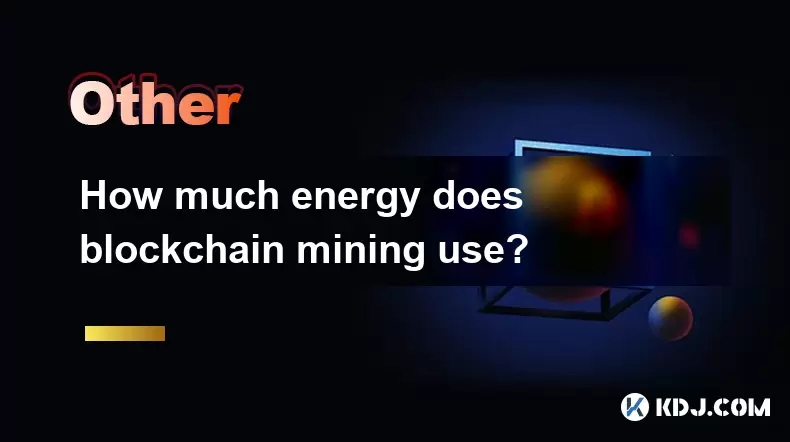-
 Bitcoin
Bitcoin $118300
-1.72% -
 Ethereum
Ethereum $3591
-0.69% -
 XRP
XRP $3.478
-3.53% -
 Tether USDt
Tether USDt $1.001
-0.01% -
 BNB
BNB $737.7
-0.54% -
 Solana
Solana $177.3
-2.40% -
 USDC
USDC $0.9999
-0.01% -
 Dogecoin
Dogecoin $0.2538
7.04% -
 TRON
TRON $0.3256
-0.85% -
 Cardano
Cardano $0.8332
-3.48% -
 Hyperliquid
Hyperliquid $44.80
-3.30% -
 Stellar
Stellar $0.4672
-6.09% -
 Sui
Sui $3.828
-5.98% -
 Chainlink
Chainlink $18.15
-3.41% -
 Hedera
Hedera $0.2655
-7.16% -
 Bitcoin Cash
Bitcoin Cash $517.5
-0.64% -
 Avalanche
Avalanche $23.89
-2.37% -
 Shiba Inu
Shiba Inu $0.00001519
-0.45% -
 UNUS SED LEO
UNUS SED LEO $8.973
0.13% -
 Toncoin
Toncoin $3.211
-2.54% -
 Litecoin
Litecoin $103.5
-3.58% -
 Polkadot
Polkadot $4.313
-3.90% -
 Uniswap
Uniswap $10.31
0.67% -
 Monero
Monero $325.4
-2.88% -
 Bitget Token
Bitget Token $5.049
3.51% -
 Ethena USDe
Ethena USDe $1.002
0.04% -
 Pepe
Pepe $0.00001346
-2.96% -
 Dai
Dai $0.9999
-0.02% -
 Aave
Aave $322.1
-2.93% -
 Bittensor
Bittensor $411.9
-4.70%
How much energy does blockchain mining use?
Bitcoin mining consumes vast energy, rivaling some countries' annual usage, raising environmental and sustainability concerns globally.
Jul 19, 2025 at 11:22 am

The Energy Consumption of Blockchain Mining
Blockchain mining, particularly in the context of cryptocurrencies like Bitcoin, has become a topic of significant debate due to its high energy consumption. As the process of mining involves solving complex cryptographic puzzles using powerful hardware, it requires a substantial amount of electricity. This raises concerns about its environmental impact, sustainability, and the economic feasibility of continuing such energy-intensive operations.
The Mechanics Behind Blockchain Mining
At the core of blockchain mining is the Proof-of-Work (PoW) consensus mechanism. Miners compete to solve cryptographic puzzles using computational power. The first miner to solve the puzzle gets the right to add the next block to the blockchain and is rewarded with newly minted cryptocurrency. This process is computationally intensive, and as more miners join the network, the difficulty of these puzzles increases, leading to even higher energy demands.
Mining rigs, especially Application-Specific Integrated Circuits (ASICs), are designed to perform trillions of calculations per second. These machines consume hundreds to thousands of watts of power continuously. The hash rate, or the speed at which these calculations are performed, directly correlates with the amount of energy used. As the hash rate increases, so does the electricity consumption.
Global Energy Usage by Blockchain Mining
Estimating the exact amount of energy used by blockchain mining is challenging due to the decentralized nature of the networks. However, several studies and tracking platforms have attempted to quantify this usage. According to the Cambridge Centre for Alternative Finance, Bitcoin mining alone consumes more electricity annually than some entire countries, such as Norway or Ukraine.
The energy consumption varies depending on factors like the efficiency of mining hardware, electricity costs, and the geographical distribution of miners. Regions with cheap electricity, such as parts of China, Kazakhstan, and Russia, have historically attracted large mining operations, contributing to localized spikes in energy demand.
Environmental Implications of High Energy Use
The environmental impact of blockchain mining is a growing concern. Since a significant portion of global electricity is still generated from fossil fuels, the carbon footprint of mining operations can be substantial. In regions where coal is the primary energy source, mining contributes to air pollution and greenhouse gas emissions.
Some mining operations have attempted to mitigate this by relocating to areas with renewable energy sources, such as hydroelectric power in Canada or geothermal energy in Iceland. However, the scalability of green mining remains a challenge, especially as the demand for cryptocurrencies continues to rise. The lack of regulation and standardization in the mining industry also makes it difficult to enforce sustainable practices.
Comparing Energy Consumption Across Blockchains
Not all blockchains consume the same amount of energy. While Bitcoin remains the most energy-intensive, other cryptocurrencies have adopted less power-hungry consensus mechanisms. For example, Ethereum transitioned from PoW to Proof-of-Stake (PoS) in 2022, reducing its energy consumption by over 99.95%. In PoS systems, validators are chosen based on the amount of cryptocurrency they "stake" rather than computational power, eliminating the need for energy-intensive mining.
Other blockchains, such as Cardano and Tezos, also use variations of PoS or similar mechanisms to achieve consensus without the high energy costs. These alternatives are increasingly seen as more sustainable options for future blockchain development. However, the dominance of Bitcoin and its PoW model means that the overall energy footprint of blockchain technology remains significantly high.
Operational Considerations for Miners
For individuals or organizations looking to enter the mining space, understanding energy consumption is crucial. The cost of electricity is one of the most significant factors affecting profitability. Miners must carefully evaluate energy rates, cooling requirements, and hardware efficiency before setting up operations.
To optimize energy use, miners often deploy custom-built mining rigs with high-performance GPUs or ASICs that offer the best hash rate per watt. Additionally, many operations are moving to co-location facilities that offer bulk electricity rates and efficient cooling systems. Some miners also utilize off-peak electricity or partner with renewable energy providers to reduce costs and environmental impact.
Here are some key steps to consider when setting up a mining operation:
- Research local electricity rates and incentives
- Select energy-efficient mining hardware
- Ensure proper ventilation and cooling systems
- Monitor power usage and hash rate regularly
- Explore renewable energy options
Frequently Asked Questions
Q: Does blockchain mining use more energy than traditional banking systems?
A: Some studies suggest that Bitcoin mining alone uses more energy than the entire banking sector. However, this comparison is complex and depends on how energy consumption is calculated across both systems.
Q: Can blockchain mining be sustainable?
A: Sustainability is possible through the use of renewable energy sources and the adoption of less energy-intensive consensus mechanisms like Proof-of-Stake.
Q: How does mining affect electricity prices in local areas?
A: Large-scale mining operations can increase local electricity demand, potentially leading to higher energy prices or strain on the power grid in certain regions.
Q: Are there regulations in place to control mining energy consumption?
A: Several countries have introduced policies to restrict or regulate mining activities due to concerns over energy use, though global enforcement remains inconsistent.
Disclaimer:info@kdj.com
The information provided is not trading advice. kdj.com does not assume any responsibility for any investments made based on the information provided in this article. Cryptocurrencies are highly volatile and it is highly recommended that you invest with caution after thorough research!
If you believe that the content used on this website infringes your copyright, please contact us immediately (info@kdj.com) and we will delete it promptly.
- TRX vs. RTX: Will Remittix Overtake Tron as the Altcoin to Watch in 2025?
- 2025-07-19 17:30:12
- Bitcoin, Nexchain, and Presales: What's Hot in the Crypto Space?
- 2025-07-19 16:30:12
- Presales, ICOs, and 100x Returns: Navigating the Crypto Landscape in 2025
- 2025-07-19 16:30:12
- Binance, Yooldo Games, and Tokens: Navigating the GameFi Landscape
- 2025-07-19 16:50:12
- Floki Inu, Meme Frenzy, and the Rise of AI Platforms: A New Era?
- 2025-07-19 16:50:12
- Dogecoin, Trader Interest, and the 2025 Meme Coin Landscape
- 2025-07-19 17:30:12
Related knowledge

Can blockchain be used for identity verification?
Jul 18,2025 at 02:14pm
Understanding Identity Verification in the Digital AgeIn the modern digital landscape, identity verification has become a critical component for ensur...

How to explain blockchain to someone with no tech background?
Jul 18,2025 at 11:08pm
Understanding the Basics of BlockchainTo explain blockchain to someone with no tech background, it's essential to start with simple analogies and avoi...

What problems does blockchain solve?
Jul 19,2025 at 12:01pm
Decentralization and Trustless SystemsBlockchain technology fundamentally addresses the issue of centralized control and trust in traditional systems....

What is an NFT and how does it relate to blockchain?
Jul 19,2025 at 04:15pm
Understanding the Concept of NFTsAn NFT, or Non-Fungible Token, is a type of digital asset that represents ownership of a unique item or piece of cont...

How much energy does blockchain mining use?
Jul 19,2025 at 11:22am
The Energy Consumption of Blockchain MiningBlockchain mining, particularly in the context of cryptocurrencies like Bitcoin, has become a topic of sign...

What are the highest paying blockchain jobs?
Jul 19,2025 at 04:49am
Overview of Blockchain Job OpportunitiesThe blockchain industry has evolved from a niche technology to a mainstream field offering a wide array of job...

Can blockchain be used for identity verification?
Jul 18,2025 at 02:14pm
Understanding Identity Verification in the Digital AgeIn the modern digital landscape, identity verification has become a critical component for ensur...

How to explain blockchain to someone with no tech background?
Jul 18,2025 at 11:08pm
Understanding the Basics of BlockchainTo explain blockchain to someone with no tech background, it's essential to start with simple analogies and avoi...

What problems does blockchain solve?
Jul 19,2025 at 12:01pm
Decentralization and Trustless SystemsBlockchain technology fundamentally addresses the issue of centralized control and trust in traditional systems....

What is an NFT and how does it relate to blockchain?
Jul 19,2025 at 04:15pm
Understanding the Concept of NFTsAn NFT, or Non-Fungible Token, is a type of digital asset that represents ownership of a unique item or piece of cont...

How much energy does blockchain mining use?
Jul 19,2025 at 11:22am
The Energy Consumption of Blockchain MiningBlockchain mining, particularly in the context of cryptocurrencies like Bitcoin, has become a topic of sign...

What are the highest paying blockchain jobs?
Jul 19,2025 at 04:49am
Overview of Blockchain Job OpportunitiesThe blockchain industry has evolved from a niche technology to a mainstream field offering a wide array of job...
See all articles

























































































